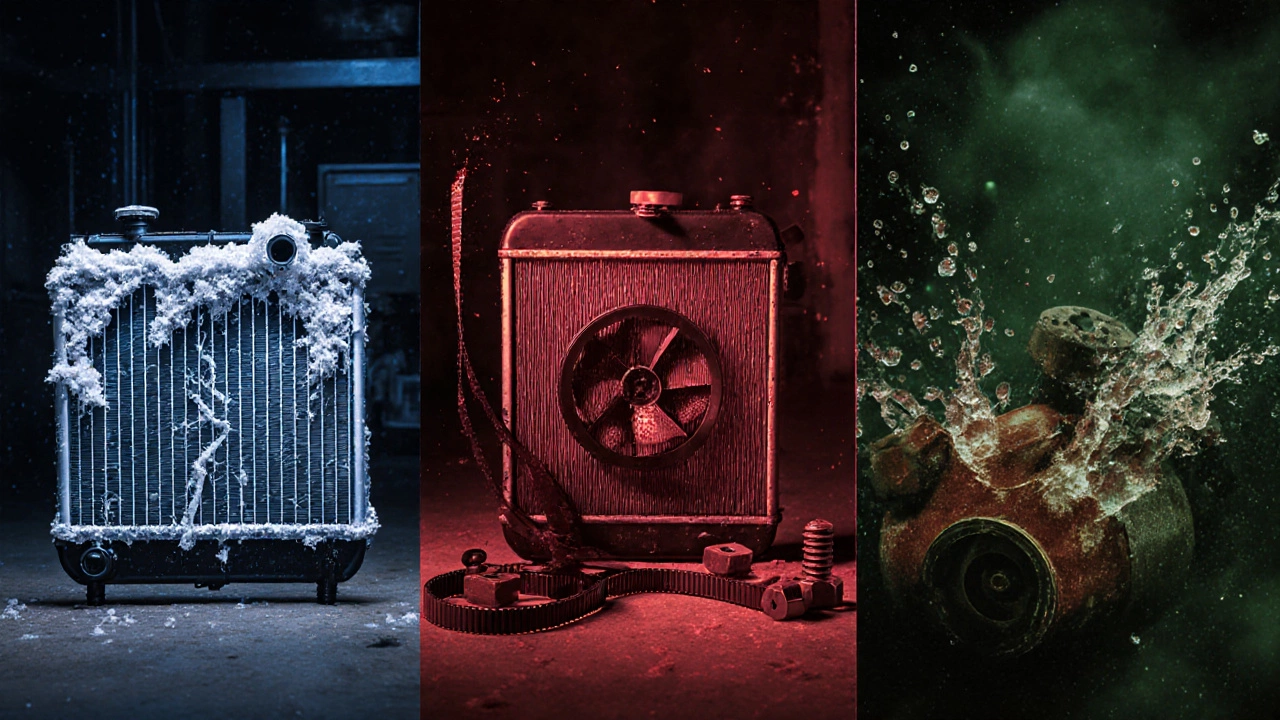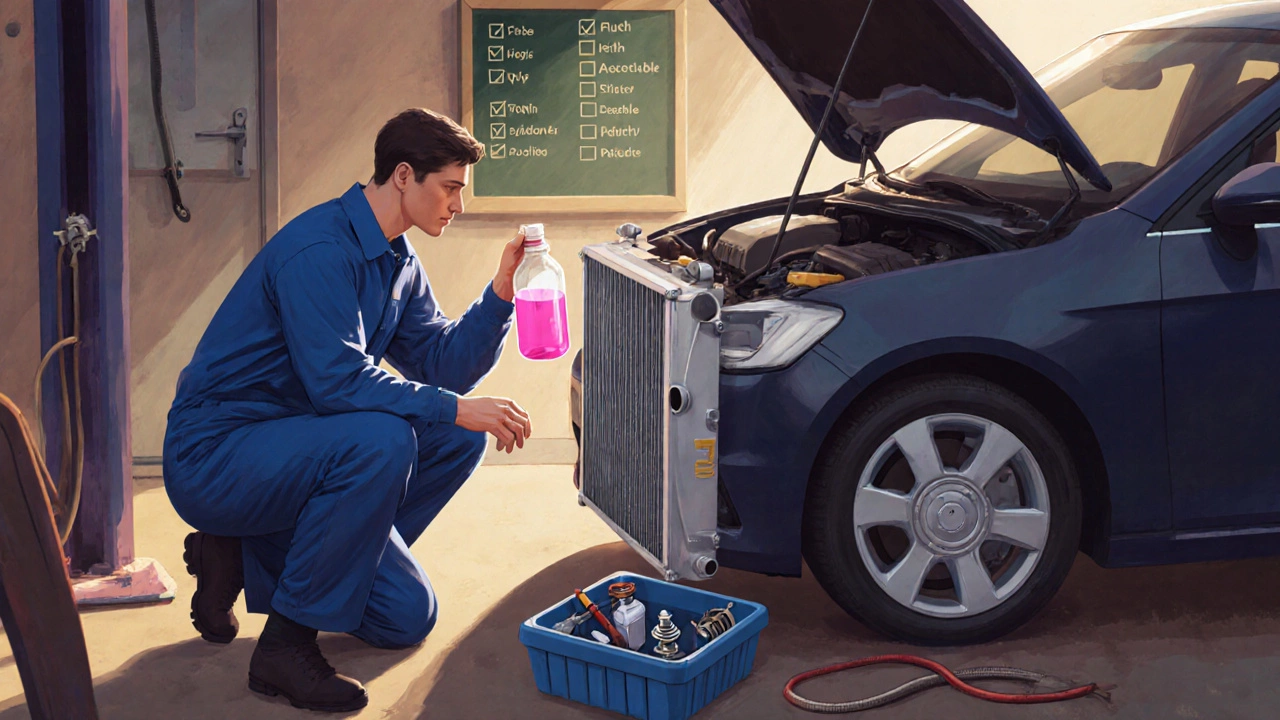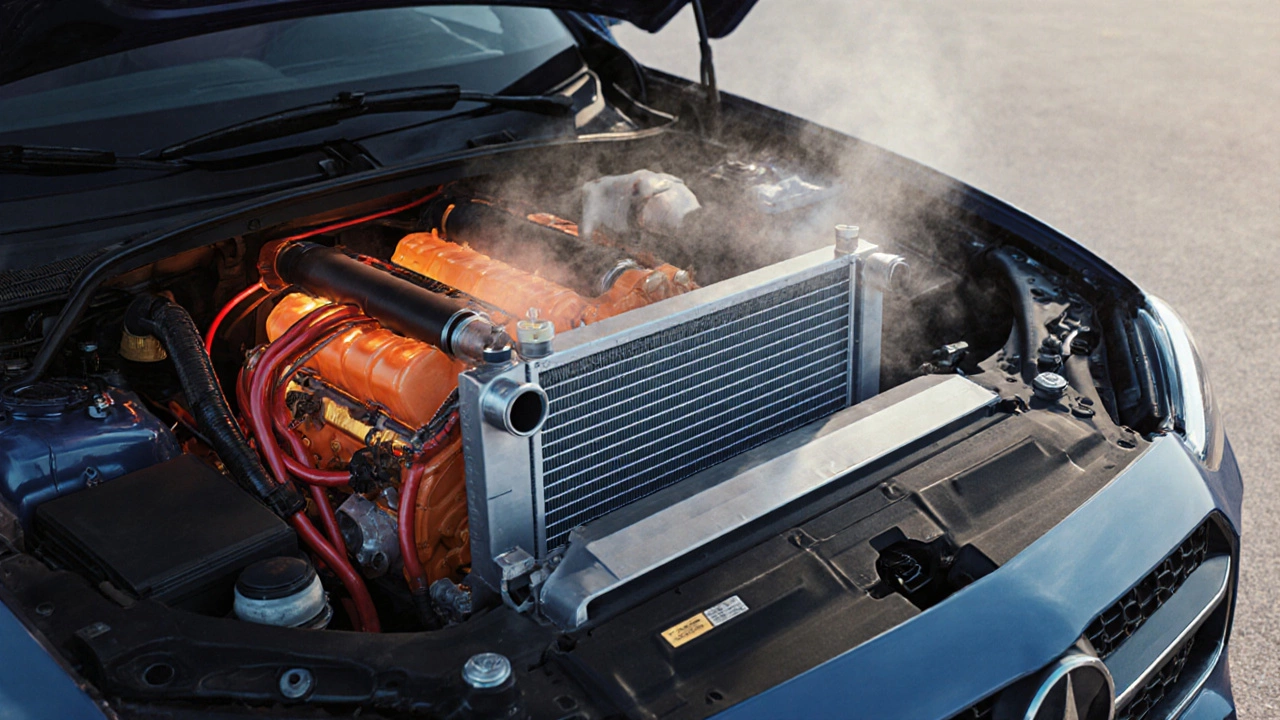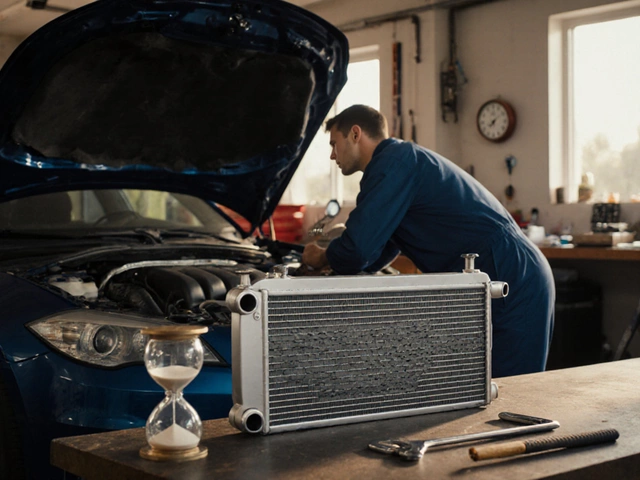When your engine starts to overheat, the first thing most drivers think about is the coolant. But the real workhorse keeping that temperature in check is the Radiator a heat‑exchange component that moves heat from the engine’s coolant to the surrounding air. Knowing how long a radiator should last helps you plan maintenance, avoid surprise breakdowns, and budget for a replacement before the heat‑up becomes costly.
Typical lifespan range for a car radiator
In most passenger cars the radiator lifespan falls between 8 and 12 years or roughly 120,000-200,000 km. That range isn’t set in stone; you’ll see radiators that retire early at 60,000 km if they’re exposed to harsh road salt, and others that keep cooling for 15 years when the owner follows a gentle maintenance routine.
Key factors that wear a radiator down
Several variables decide whether your radiator will hit the low end of that range or push past the high end. Think of them as the three pillars of radiator health:
- Water quality: Hard water leaves mineral deposits (scale) that block fins. Using distilled or properly mixed coolant prevents this.
- Mechanical stress: Vibration from a mis‑aligned engine, a failing water pump, or a loose fan belt can crack the core or loosen the mounting brackets.
- Corrosive environment: Road salt, acidic coolant, and extreme temperature swings accelerate metal fatigue and cause leaks.
When any of these pillars falter, the radiator’s internal tubes and external fins start to lose efficiency, leading to higher engine temperatures.
How to spot a radiator that’s about to fail
Early detection saves you from a roadside overheating episode. Keep an eye out for these tell‑tale signs:
- Visible coolant puddles underneath the car, especially after the engine has been running.
- Steam or a sweet smell coming from the front of the vehicle.
- Fluctuating temperature gauge - the needle climbs quickly after a short drive.
- Radiator fan running continuously, even when the engine is cool.
- Coolant that appears rusty or has floating debris, indicating internal corrosion.
If you notice two or more of these symptoms, it’s time to inspect the core, hoses, and connections.

Maintenance habits that add years to a radiator
Proactive care can stretch that 8‑year baseline by a few seasons. Follow this simple routine:
- Check coolant level and colour every month. Top up with the manufacturer’s recommended mix (usually 50/50 antifreeze to water).
- Flush the cooling system every 40,000 km or every two years, whichever comes first. A proper flush removes scale and old coolant residue.
- Inspect the Radiator hose rubber conduits that carry coolant between the engine and the radiator for cracks, bulges, or soft spots.
- Ensure the Thermostat a valve that regulates coolant flow based on temperature opens fully at the specified temperature (usually around 90°C). A stuck thermostat can overheat the core.
- Keep the front grille and fan shroud clean. Dirt buildup reduces airflow across the radiator fins.
These steps cost a few dollars in parts and a few hours of DIY time, but they can delay an expensive replacement by years.
Choosing the right radiator type for longevity
Not all radiators are built the same. Below is a quick comparison of the three most common construction materials. The table uses schema.org markup so search engines can pick out the data cleanly.
| Material | Typical Weight | Corrosion Resistance | Heat Transfer Efficiency | Average Lifespan |
|---|---|---|---|---|
| Aluminum radiator | Light (≈3kg for a midsize sedan) | High - forms a protective oxide layer | Very good - conducts heat 3× faster than copper | 8‑12years (if coolant is maintained) |
| Plastic radiator | Lightest (≈2kg) | Excellent - no metal corrosion | Good - slightly lower than aluminum | 6‑10years (more sensitive to overheating) |
| Copper radiator | Heavy (≈5kg) | Low - prone to galvanic corrosion unless coated | Excellent - best heat transfer of all metals | 10‑15years (requires diligent corrosion control) |
For most modern cars, an aluminum radiator offers the best balance of weight, heat transfer, and durability, provided you stick to the recommended coolant mix.
Replacement cost guide and budgeting tips
When the radiator finally gives out, you’ll need to replace it and possibly a few ancillary parts. Here’s a rough cost breakdown for a typical compact sedan in 2025 (prices in Australian dollars):
- Standard aluminum radiator: $350‑$480
- Premium copper radiator: $560‑$720
- Plastic radiator (OEM): $300‑$410
- Labor (2‑3hours at $110/hr): $220‑$330
- Coolant flush and refill: $80‑$120
Total out‑of‑pocket expense ranges from $650 to $1,200. If you budget $100 a year into a car‑maintenance fund, you’ll have the cash ready when the time comes.

Quick life‑expectancy checklist
Before you finish reading, print or screenshot this cheat‑sheet. Tick each item during your next service:
- Coolant colour is clear and pink, not rusty brown.
- Radiator hoses show no cracks or bulges.
- Thermostat opens at ~90°C (check with a temperature gun).
- Fan shroud and grille are free of debris.
- Cooling system flushed within the last 40,000km.
- No visible coolant leaks under the car.
- Temperature gauge stays steady after 10minutes of highway cruising.
If you can answer “yes” to at least six of these, your radiator is probably still in good health. Anything lower, schedule a professional inspection.
When to replace versus repair
Minor leaks can sometimes be patched with a radiator sealant, but the fix is temporary. A good rule of thumb: if the repair cost exceeds 30% of a brand‑new radiator price, just replace the whole unit. This avoids repeat visits and ensures the cooling system operates at peak efficiency.
Frequently Asked Questions
How often should I flush my radiator?
Most manufacturers recommend a full flush every 40,000km or every two years, whichever comes first. If you drive in salty coastal areas or use hard water, shorten the interval to 20,000km.
Can I mix different brands of coolant?
Mixing brands is generally safe as long as they share the same base (ethylene glycol or propylene glycol) and you keep the final concentration at 50/50. Mixing incompatible types (e.g., silicate‑based with OAT) can cause gelling and blockages.
Why does my radiator fan run all the time?
A stuck thermostat, low coolant level, or a faulty temperature sensor can signal the engine is hotter than it is, causing the fan to stay on. Check the coolant level first, then test the thermostat with a temperature gun.
Is a plastic radiator as reliable as metal?
Plastic radiators resist corrosion completely, but they are more vulnerable to heat‑induced warping and cracking under extreme conditions. For everyday driving in moderate climates they perform well; for high‑performance or hot‑climate cars, metal (aluminum or copper) is preferable.
What does a rusty coolant color mean?
Rust indicates that metal parts-often the radiator core or the water pump-are corroding. It also means the coolant’s anti‑corrosive additives have been depleted. Replace the coolant and inspect the core for leaks.
Do I need a new radiator if the temperature gauge spikes briefly?
A brief spike can result from a short‑term load (like climbing a steep hill). If the gauge settles quickly and there are no leaks or warning lights, monitor it for a few days. Persistent spikes usually point to a developing radiator issue.




